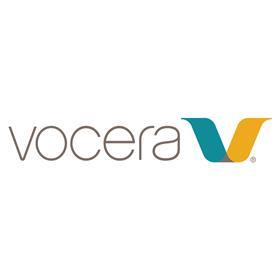By taking advantage of systems integrations, intelligent workflows, and hands-free communication devices, hospitals can advance their protection efforts, writes Ben Kanter
![]()
This is paid-for content from our commercial partners. Find out more

Sponsored by
Clinicians and nurses contend with infectious diseases every day. The covid-19 pandemic is highlighting this stressful aspect of care, partly because it’s highly contagious, and also because it’s creating unprecedented demand to protect hospital staff coupled with the need to optimise patient flow.
Caregivers shouldn’t risk contamination for communication
Without effective communication, patients cannot be moved through a hospital. And, yet, with a highly infectious virus, the simple act of communicating using conventional tools puts caregivers at risk.
If you are a nurse wearing personal protective equipment while treating a patient behind closed doors and must urgently contact someone for assistance, you’re faced with a problem.
You may have to interrupt caring for your patient to communicate using the intercom. If there is no intercom, you will need to leave the patient’s bedside and remove your PPE, risking self-contamination and delaying your ability to have the necessary discussion. The less you need to temporarily remove PPE, the safer you are. Additionally, by not removing PPE to communicate, you will preserve your valuable, but limited, supply of protective gear. Here is where Vocera® technology can provide you with an ideal solution: our wearable, hands-free devices.
Communication technology is an integral component of PPE
Worn under PPE, our classic Vocera Badge and the new Smartbadge give you and your staff access to a clear, secure, hands-free communication channel that will keep everyone safer – whether they are working in a triage tent, ICU, an isolation room, or elsewhere in the hospital. And it enables care teams to provide safer, high-quality patient care.
Using a voice interface to connect care team members – either by name, role, location or group (“Call Robert Jones”, “Call room 101 nurse”, “Call lab”, or “Broadcast to rapid response team”) – eliminates the need to remove PPE or touch a device, and allows for unfettered, efficient communication.
Optimising throughput and capacity
Effective communication is essential for optimising throughput and capacity, which are key to managing patient surges anticipated during a pandemic of this scale. A hospital must be able to move patients through the continuum of care quickly and safely.
As an example: whether a patient tests positive or negative for covid-19, it’s vital that care teams are notified immediately. Patients who test negative can be moved out of isolation rooms, freeing them up – and potentially other resources – for other patients.
When a hospital’s communication and clinical systems are integrated, processes can be automated, reducing the risk of communication delays or errors and shortening the time to react. Automatic alerts sent when certain triggers occur means caregivers don’t need to constantly monitor the EHR for status updates. Critical lab results, as an example, can be sent directly to the right care team member in real time. Patient care is expedited, throughput is improved, and clinicians have less to remember, alleviating cognitive burden. Deploying notifications intelligently reduces the toil and stress on care teams.
In this challenging time, it has never been more critical to keep staff and patients safe and in touch with each other. By taking advantage of systems integrations, intelligent workflows, and hands-free communication devices, hospitals can advance their protection efforts now.
Vocera is here to take care of you as you continue to take care of your staff and patients.
Visit our COVID-19 resource page for more helpful resources and information.




























